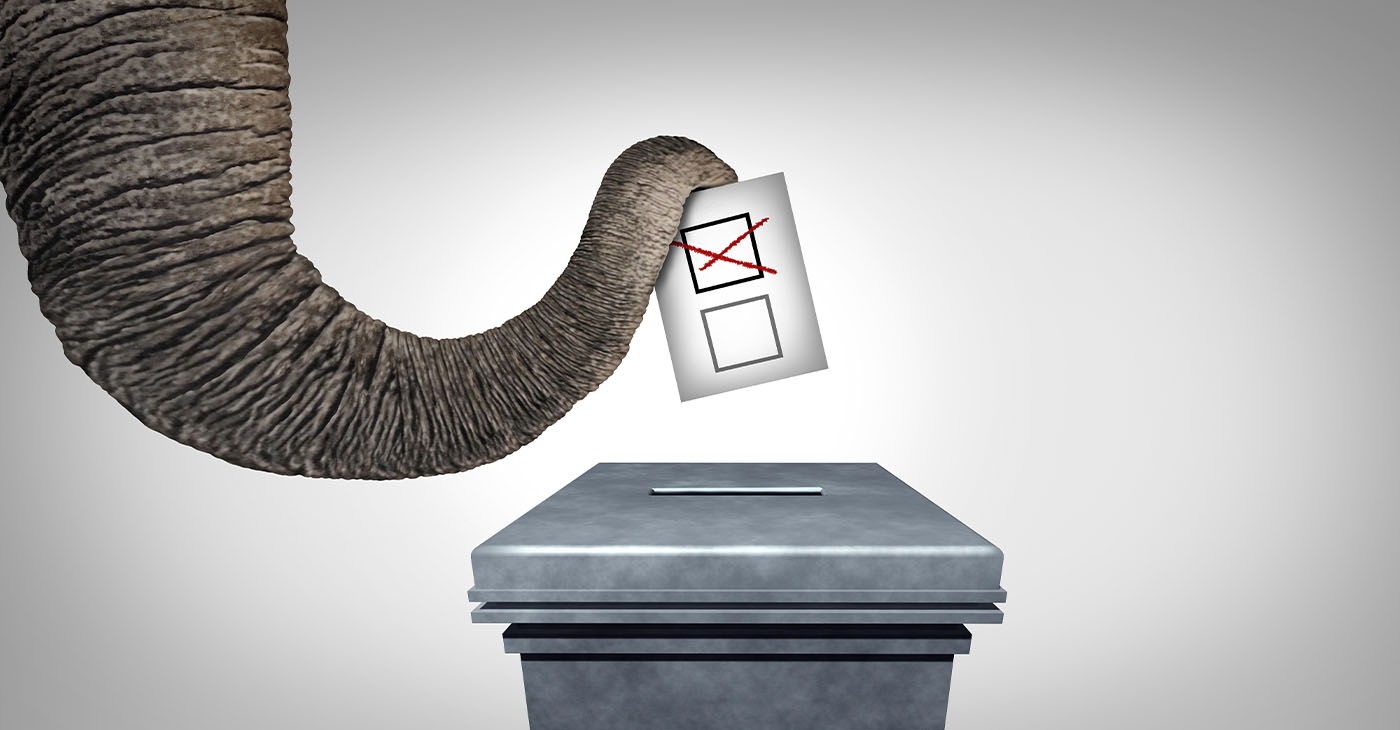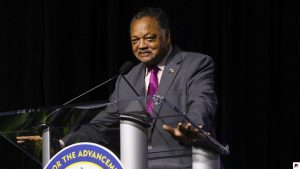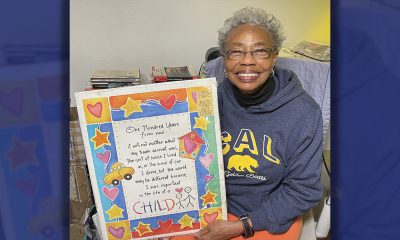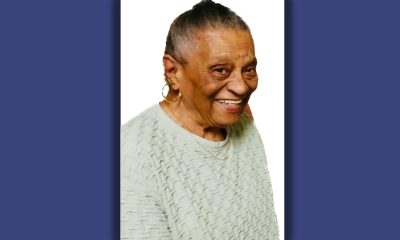Commentary
COMMENTARY: Big tech needs to sound the alarm on face recognition
MINNESOTA SPOKESMAN-RECORDER — History has taught us that given the opportunity, governments will exploit new surveillance technologies.
A top Google executive recently sent a shot across the bow of its competitors regarding face surveillance. Kent Walker, the company’s general counsel and senior vice president of global affairs, made it clear that Google — unlike Amazon and Microsoft — will not sell a face recognition product until the technology’s potential for abuse is addressed.
Face recognition, powered by artificial intelligence, could allow the government to supercharge surveillance by automating identification and tracking. Authorities could use it to track protesters, target vulnerable communities (such as immigrants), and create digital policing in communities of color that are already subject to pervasive police monitoring.
So how are the world’s biggest technology companies responding to this serious threat to privacy, safety and civil rights? Google, at least, appears to be taking the risks seriously with its recent announcement. Microsoft, unfortunately, is just talking the talk. And Amazon is completely running amok.
All three companies need to take responsibility for uses of their technology. Now, a nationwide coalition of civil rights organizations has demanded that they not sell face surveillance to the government.
Last spring, the ACLU exposed how Amazon is aggressively trying to sell its face surveillance product —Rekognition — to government agencies. The company’s marketing materials read like a user manual for the type of authoritarian surveillance you can currently see in China.
Amazon encourages governments to use its technology to track “persons of interest” and monitor public spaces, comparing everyone to databases with tens of millions of faces. Amazon even suggested pairing face recognition with police body cameras, a move that would transform devices meant for police accountability into roving mass-surveillance devices.
The dangers couldn’t be clearer. In an eye-opening test, Amazon’s Rekognition falsely matched 28 members of Congress against a mugshot database. Tellingly, congressional members of color were disproportionately misidentified, including civil rights leader Rep. John Lewis, D-Ga. And that test wasn’t based on a hypothetical: Law enforcement has already been using Rekognition to match pictures against arrest-photo databases.
Following these revelations, federal lawmakers spoke up about the risks of face surveillance, and civil rights groups, company shareholders, and hundreds of Amazon employees have called on Amazon to stop selling the technology to governments. But, instead of heeding these concerns and taking their product off the table for governments, the company is trying to sell Rekognition to Immigration and Customs Enforcement and the FBI.
Amazon’s statements and actions provide a stark contrast with Google’s approach. While Amazon CEO Jeff Bezos acknowledged his company’s products might be put to “bad uses,” he said the solution was to wait for society’s eventual “immune response” to take care of the problems. This is a shocking abdication of responsibility, not to mention convenient blindness to the “response” that Rekognition has already engendered.
Google, on the other hand, has charted a distinctly different course with technologies based on artificial intelligence, with CEO Sundar Pichai urging his industry to realize that “it just can’t build it and then fix it.”
So where is Microsoft in all this? The company has explicitly recognized the dangers of face surveillance in its statements, but its proposed solutions don’t add up.
In a blog post, Microsoft President Brad Smith correctly identifies the threats the technology poses to privacy, free speech, and other human rights, observing that today’s technology makes a surveillance state possible.
But then, after outlining those grave threats to democracy, Smith proposes relying on inadequate safeguards that have failed in the past with technologies far less dangerous than face surveillance. He expresses excessive faith in notifying people of face surveillance systems — but what good is that in a world where face recognition is so widespread that nobody can opt out?
History has taught us that given the opportunity, governments will exploit new surveillance technologies, especially to target communities of color, religious minorities and immigrants. With face surveillance, we are at a crossroads. The choices made now will determine whether the next generation will have to fear being tracked by the government for attending a protest or going to their place of worship — or simply living their lives.
That’s why so many people have been sounding the alarm. Microsoft has heard it, but seems to be in denial. Amazon needs to get its fingers out of its ears and start really listening. Google has heard it and is on the right track — the rest of the industry should follow its lead.
Nicole Ozer is director of Technology & Civil Liberties, ACLU of California.
This article originally appeared in the Minnesota Spokesman-Recorder.
Activism
Oakland Post: Week of April 17 – 23, 2024
The printed Weekly Edition of the Oakland Post: Week of April 17 – 23, 2024

To enlarge your view of this issue, use the slider, magnifying glass icon or full page icon in the lower right corner of the browser window. ![]()
Commentary
Opinion: Surviving the Earthquake, an Eclipse and “Emil Amok.”
Last Friday, a 4.8 magnitude earthquake shook New York City, reported as the “biggest earthquake with an epicenter in the NYC area since 1884” when a 5.2 quake hit. A bit bigger. The last quake similar to Friday’s was a 4.9 in 1783.Alexander Hamilton felt it — 241 years ago. That’s why New Yorkers were freaking out on Friday. They were in the room where it happens.

By Emil Guillermo
I’m a Northern Californian in New York City for the next few weeks, doing my one-man show, “Emil Amok, Lost NPR Host, Wiley Filipino, Vegan Transdad.”
I must like performing in the wake of Mother Nature.
Last Friday, a 4.8 magnitude earthquake shook New York City, reported as the “biggest earthquake with an epicenter in the NYC area since 1884” when a 5.2 quake hit. A bit bigger. The last quake similar to Friday’s was a 4.9 in 1783.
Alexander Hamilton felt it — 241 years ago.
That’s why New Yorkers were freaking out on Friday. They were in the room where it happens.
And it just doesn’t happen that often.
Beyonce singing country music happens more frequently.
When I felt New York shake last week, it reminded me of a time in a San Francisco TV newsroom when editors fretted about a lack of news an hour before showtime.
Then the office carpeting moved for a good ten seconds, and the news gods gave us our lead story.
On Friday when it happened in NYC, I noticed the lines in the carpeting in my room wiggling. But I thought it was from a raucous hotel worker vacuuming nearby.
I didn’t even think earthquake. In New York?
I just went about my business as if nothing had happened. After living near fault lines all my life, I was taking things for granted.
Considering the age of structures in New York, I should have been even more concerned about falling objects inside (shelves, stuff on walls) and outside buildings (signs, scaffolding), fire hazards from possible gas leaks, and then I should have looked for others on my floor and in the hotel lobby to confirm or aid or tell stories.
Of course, as a Californian who has lived through and covered quakes in the 4 to 6 magnitude range, I tried to calm down any traumatized New Yorker I encountered by taking full responsibility for bringing in the quake from the Bay Area.
I reassured them things would be all right, and then let them know that 4.8s are nothing.
And then I invited them to my consoling post-Earthquake performance of “Emil Amok, Lost NPR Host…”
It was the night of the eclipse.
ECLIPSING THE ECLIPSE
In New York City, the eclipse was about 90 percent visible. Good enough for me. Though a full solar eclipse is a celestial rarity, blockages of any sort aren’t generally celebrated. My one-man play is about growing up with the eclipsed history of American Filipinos and how I struggle to unblock all that.
For example, did you know the first Filipinos actually arrived to what is now California in 1587? That’s 33 years before the Pilgrims arrived in America on the other coast, but few know the Filipino history which has been totally eclipsed.
I was in Battery Park sitting on a bench and there was a sense of community as people all came to look up. A young woman sitting next to me had a filter for a cell phone camera. We began talking and she let me use it. That filter enabled me to take a picture of the main event with my iPhone.
For helping me see, I invited her and her boyfriend to come see my show.
Coincidentally, she was from Plymouth, Massachusetts, near the rock that says the year the Pilgrims landed in 1620.
In my show she learned the truth. The Pilgrims were second.
History unblocked. But it took a solar eclipse.
Next one in 2044? We have a lot more unblocking to do.
If you’re in New York come see my show, Sat. April 13th, 5:20 pm Eastern; Fri. April 19, 8:10 pm Eastern; and Sun. April 21st 5:20 pm Eastern.
You can also livestream the show. Get tickets at www.amok.com/tickets
About the Author
Emil Guillermo is a journalist and commentator. He does a mini-talk show on YouTube.com/@emilamok1. He wishes all his readers a Happy Easter!
Commentary
Commentary: Republican Votes Are Threatening American Democracy
In many ways, it was great that the Iowa Caucuses were on the same day as Martin Luther King Jr. Day. We needed to know the blunt truth. The takeaway message after the Iowa Caucuses where Donald Trump finished more than 30 points in front of Florida Gov. De Santis and former South Carolina Governor Nikki Haley boils down to this: Our democracy is threatened, for real.

By Emil Guillermo
In many ways, it was great that the Iowa Caucuses were on the same day as Martin Luther King Jr. Day.
We needed to know the blunt truth.
The takeaway message after the Iowa Caucuses where Donald Trump finished more than 30 points in front of Florida Gov. De Santis and former South Carolina Governor Nikki Haley boils down to this: Our democracy is threatened, for real.
And to save it will require all hands on deck.
It was strange for Iowans to caucus on MLK day. It had a self-cancelling effect. The day that honored America’s civil rights and anti-discrimination hero was negated by evening.
That’s when one of the least diverse states in the nation let the world know that white Americans absolutely love Donald Trump. No ifs, ands or buts.
No man is above the law? To the majority of his supporters, it seems Trump is.
It’s an anti-democracy loyalty that has spread like a political virus.
No matter what he does, Trump’s their guy. Trump received 51% of caucus-goers votes to beat Florida Gov. Ron DeSantis, who garnered 21.2%, and former South Carolina Gov. Nikki Haley, who got 19.1%.
The Asian flash in the pan Vivek Ramaswamy finished way behind and dropped out. Perhaps to get in the VP line. Don’t count on it.
According to CNN’s entrance polls, when caucus-goers were asked if they were a part of the “MAGA movement,” nearly half — 46% — said yes. More revealing: “Do you think Biden legitimately won in 2020?”
Only 29% said “yes.”
That means an overwhelming 66% said “no,” thus showing the deep roots in Iowa of the “Big Lie,” the belief in a falsehood that Trump was a victim of election theft.
Even more revealing and posing a direct threat to our democracy was the question of whether Trump was fit for the presidency, even if convicted of a crime.
Sixty-five percent said “yes.”
Who says that about anyone of color indicted on 91 criminal felony counts?
Would a BIPOC executive found liable for business fraud in civil court be given a pass?
How about a BIPOC person found liable for sexual assault?
Iowans have debased the phrase, “no man is above the law.” It’s a mindset that would vote in an American dictatorship.
Compare Iowa with voters in Asia last weekend. Taiwan rejected threats from authoritarian Beijing and elected pro-democracy Taiwanese vice president Lai Ching-te as its new president.
Meanwhile, in our country, which supposedly knows a thing or two about democracy, the Iowa caucuses show how Americans feel about authoritarianism.
Some Americans actually like it even more than the Constitution allows.
About the Author
Emil Guillermo is a journalist and commentator. He does a mini-talk show on YouTube.com/@emilamok1.
-

 Activism4 weeks ago
Activism4 weeks agoOakland Post: Week of March 20 – 26, 2024
-

 #NNPA BlackPress3 weeks ago
#NNPA BlackPress3 weeks agoCOMMENTARY: D.C. Crime Bill Fails to Address Root Causes of Violence and Incarceration
-

 #NNPA BlackPress4 weeks ago
#NNPA BlackPress4 weeks agoFrom Raids to Revelations: The Dark Turn in Sean ‘Diddy’ Combs’ Saga
-

 #NNPA BlackPress3 weeks ago
#NNPA BlackPress3 weeks agoMayor, City Council President React to May 31 Closing of Birmingham-Southern College
-

 #NNPA BlackPress4 weeks ago
#NNPA BlackPress4 weeks agoCOMMENTARY: Lady Day and The Lights!
-

 Activism3 weeks ago
Activism3 weeks agoOakland Post: Week of March 27 – April 2, 2024
-

 #NNPA BlackPress4 weeks ago
#NNPA BlackPress4 weeks agoBaltimore Key Bridge Catastrophe: A City’s Heartbreak and a Nation’s Alarm
-

 #NNPA BlackPress4 weeks ago
#NNPA BlackPress4 weeks agoBaltimore’s Key Bridge Struck by Ship, Collapses into Water














































